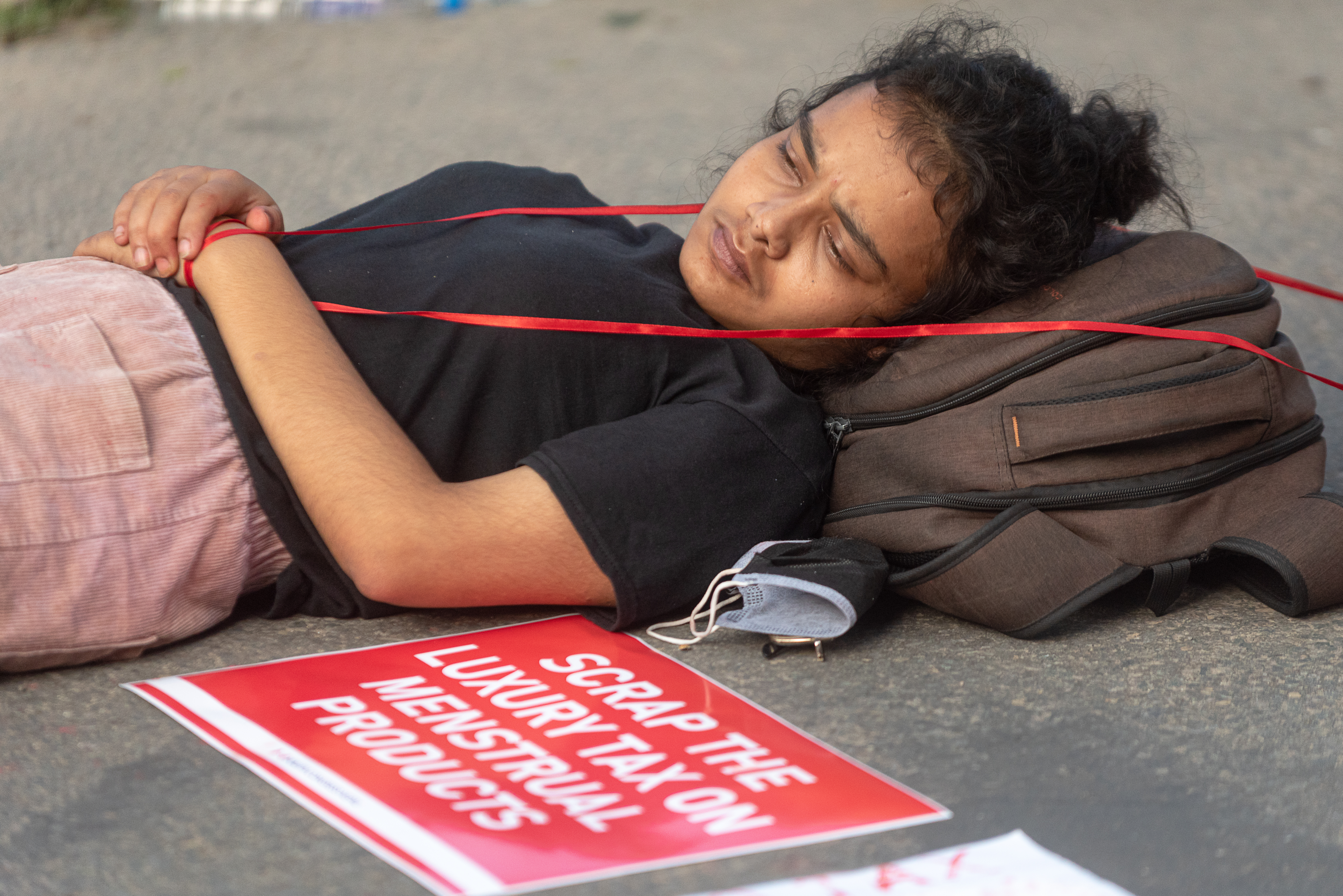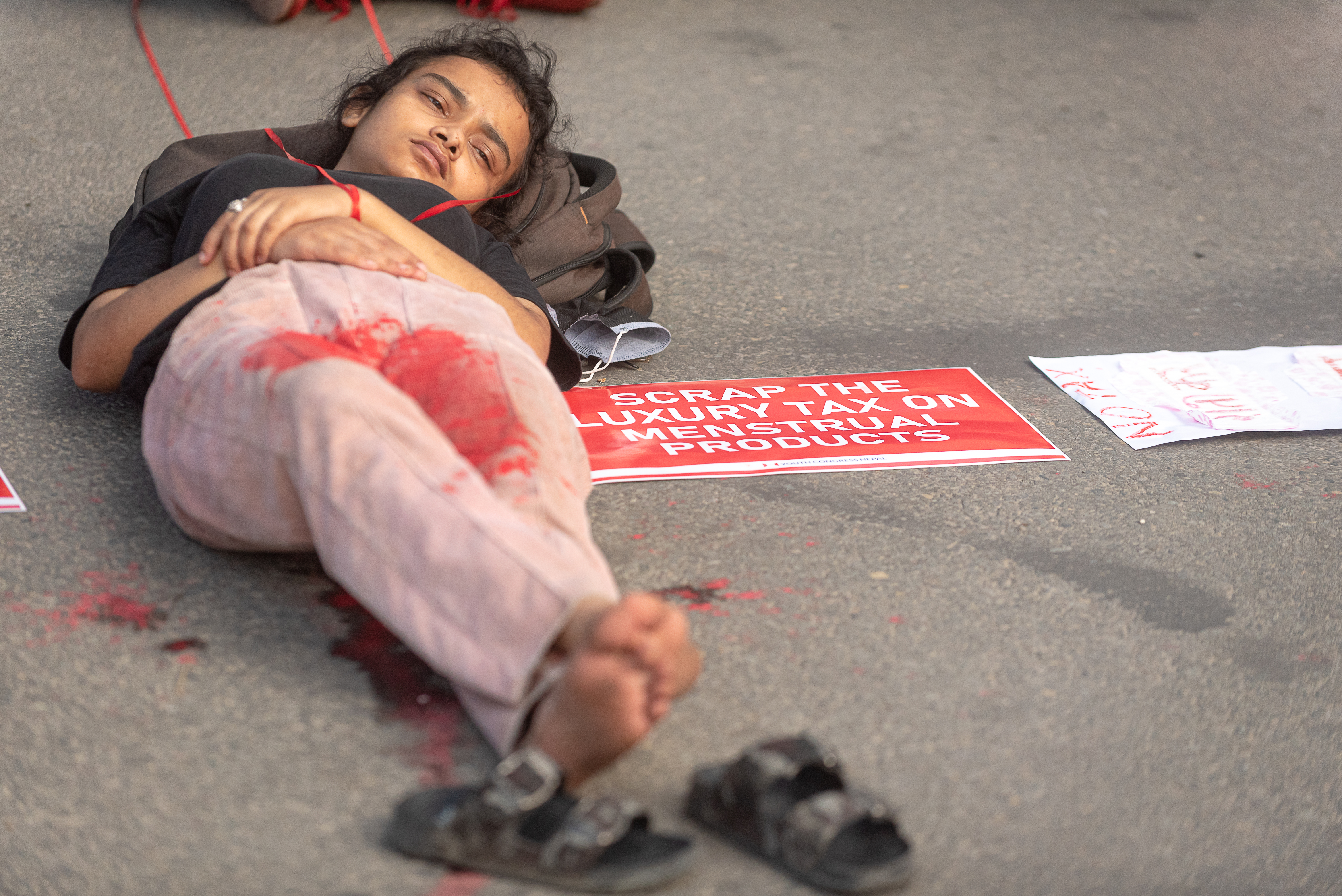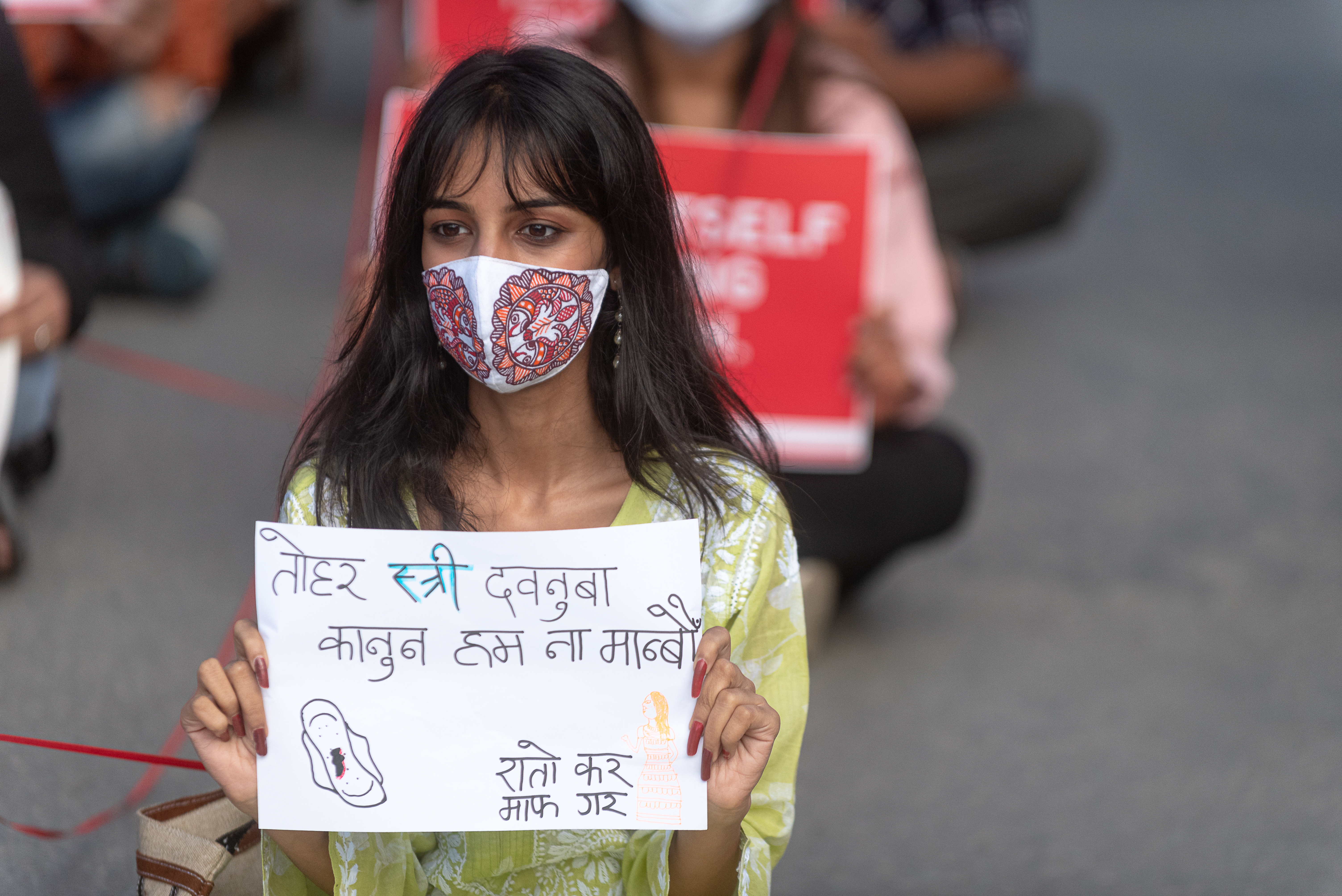Nepali women pay 13 percent value-added tax (VAT) on menstrual hygiene products such as sanitary pads. This is one reason the prices of menstrual products are markedly high, especially in rural municipalities and villages, making it difficult for women of low-income groups to procure them every month.
A 2016 report on menstrual health and hygiene management found that, only 15 percent Nepali women used sanitary pads while 83 percent still used cotton cloths. Similarly, a survey conducted by Pad2Go Nepal, a for-profit social enterprise that is campaigning to remove taxation of menstrual products, has calculated that an average Nepali woman uses about 7,296 pads in her lifetime.
The government grants VAT exemption on ‘essential’ items such as medical products, medicines, and contraceptives, but menstrual hygiene products are still treated as ‘luxury’ items that don’t qualify for the exemption.
But what if menstrual products were made free? Would more women use them? Or are there other factors that come between accessibility and use?
Also read: What if… the 2015 constitution had been delayed?
Youth Congress Nepal, in collaboration with Pad2Go Nepal, had organized a symbolic protest on September 23 at Maitighar, Kathmandu, demanding the cancellation of taxes on menstrual hygiene products. Protest participants were of the view that while withdrawing taxes or making such products free is of utmost importance in the short run, making them easily available to everyone and busting period-related myths through education are as important in the long run.
“A large segment of the population isn’t even aware of menstrual hygiene products and is still obliged to use unhygienic cotton cloths,” says Asmita Shah, central committee member of Youth Congress. She says such products should not only be tax-free but completely free for all menstruating women from rural areas.
Expensive in Humla
Twenty-year-old Kritagya Kriti, a volunteer at Himalayan Education and Development (HEAD Nepal), a non-profit that works for persons with disabilities in Simikot, Humla, was shocked to find that the menstrual pads there were over twice as expensive as they would be, say, in Kathmandu. “The price of a regular pad there is Rs 150 even as the MRP is Rs 60,” Kriti shares. “How can we expect menstruating women to maintain menstrual hygiene if doing so burns a hole in their pocket every month?”
In areas like Simikot, due to long distance, menstrual products are sold at a retail price multiple times the original price. In Upper Dolpa, these products are not even available due to lack of proper transport facilities.

“People don’t have periods by choice,” says Dr Garima Shrestha, women’s health advocate and founder of She Nepal, a voluntary organization for women’s health and empowerment. “Every one of menstruating women deserves proper and affordable facilities to ensure their health and hygiene.”
Shrestha, too, believes that making menstrual products tax-free is not the panacea. They should rather be made completely free for menstruating women from low-income groups. She Nepal has distributed around 20,000 reusable sanitary products in 23 districts for free, among which 10,000 were distributed during the Covid-19 lockdown.
Pooja Bista, co-founder of Untold Period Stories, a digital movement that promotes the normalization of periods through storytelling, says menstrual products, a basic need, should be made tax-free, but she wonders if making pads completely free is the answer to what is a multi-pronged problem.
“We talk about making these products free, but we aren’t mindful of what will happen after that,” she says. Bista fears making sanitary pads free may affect their quality and their supply chain. Especially in a country like Nepal where there is little effective monitoring, there is always the risk of corruption from among suppliers, sellers, and retailers.
Dr Shrestha concurs: “We have no way of monitoring the whole manufacture and distribution process”.
That said, with alarming levels of period poverty in many villages and rural areas, free pads would cater to the needs of a large population of menstruating women who can’t afford to buy these products. “They will at least have something to cover their periods which is better than having nothing,” Dr Shrestha adds.
Suspicious eyes
There are also other factors holding back Nepali menstruating women from using these products. “It depends on their age, geography, health condition, and if such products are socially and ethically acceptable,” Bista says.
Countless superstitions and myths still surround menstruation. When distributing reusable menstrual products, there were times when people looked at Dr Shretha’s team suspiciously as they were promoting something that many considered a taboo. And then there are the myths.
Untold Period Stories is now collaborating with Be Artsy Nepal, another digital platform, to share period stories of women of Achham district in far-western Nepal under #mytakeonmyperiods. Shares Thambara BK, 28, a tailor: “The villagers say menstrual blood is impure. My menstrual blood is rather black or brownish, whereas the blood that comes out of our wounds and noses is crimson red. So how could I disagree?” Like many other women of the district, BK has unquestioningly accepted common societal myths over period taboos.

The state has been providing free pads to menstruating students of government schools to help reduce the number of absentees. But there is no clear data that high price is the only reason holding many girl students from using sanitary pads.
“While it is good that we are working to make menstrual products more accessible, we still lack awareness,” Dr Shrestha says. “When I visited a government school in Kakani, a student told me that her health education was being hampered as her male teacher feels uncomfortable talking about the female body.”
Then there are more common cases of lack of awareness. In yet another #mytakeonperiod story, Bhagwati Bista, 35, shares, “I don’t have heavy bleeding, so I use one cotton cloth that lasts a day. But I wasn’t aware that we had to change it frequently even if it’s a light flow”.
The missing focus
It is also necessary to acknowledge the sustainable aspect of sanitary pads. In many places of Nepal, people still aren’t aware of how to properly dispose of them. Often, there isn’t enough water to maintain proper sanitation when using reusable menstrual products.
There is much to do, activists say. Shah believes that if we are to reduce the price of menstrual pads by scrapping the luxury tax, more people can afford them and they can be accessible in more places—and that would be a good start.

“If zero tax is not possible right now, alternatives should be thought about,” says Krisha Niroula, research associate at Untold Period Stories. “These may involve building local sustainable [cloth] menstrual products-making plants and levying bare minimum taxes on them or subsidizing period products for the underprivileged.”
In the course of doing this article, one thing became pretty evident: we need more research on this issue. To promote accessible and hygienic menstrual health for all, the focus should be not only on removing taxes on sanitary pads or distributing them for free, but also on menstrual education, awareness, infrastructure, and removal of taboos.











